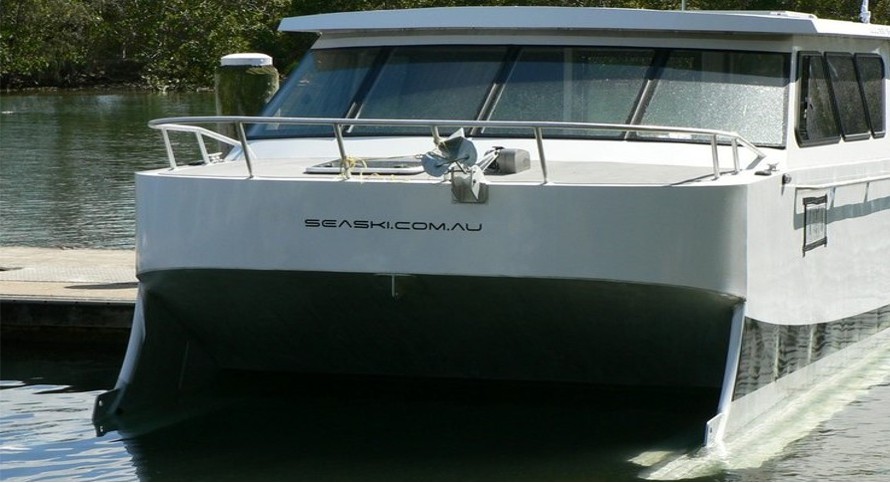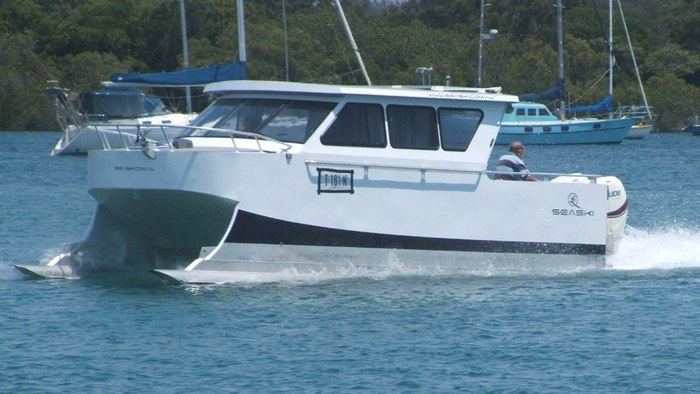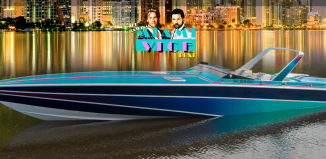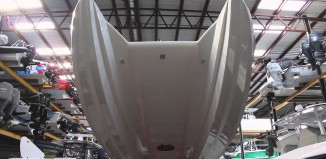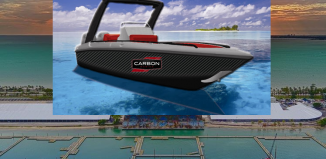There is no end in sight when it comes to any aspect of the continually evolving performance marine industry. Where there is a will to get better, there is a way, and Trevor Payne has taken this next step with his new hull concept the SeaSki.
Payne’s SeaSki design encompasses a new hull concept that uses specially designed skis in order to achieve a hydrofoil like lift, thus stabilizing the craft, increasing speed, and allowing for greater fuel economy. The new design even allows for a shallower draft and minimal wash and bow waves, all increasing the efficiency of the craft. The production model, measuring 8.25m x 3.5m with a 7m x 3m all aluminum hull is powered by twin 300hp outboards, propelling the craft to cruising speeds in excess of 45mph and a top speed of around 58mph. A testament to the unique design, these speeds can be achieved even in rough water that would normally slow other crafts.
In an interview with Gizmag, Payne described the difference between the SeaSki and the better known Hydrofoil…
“The hydrofoil uses the equivalent of an “underwater wing” to lift the boat upwards, whereas we achieve it with special skis, and the ski approach offers potentially much higher speed capabilities because the hydrofoil wing is operating underwater in 800 times the viscosity of air, which poses major obstacles for a “wing” at higher speeds.”
SeaSki’s greatest and most noticeable advantages over other boats are both its speed and absence of wake at cruising speeds both in calm and rough waters. The ability of the skis to lift the boat clear of the water and minimize drag eliminates much of the problems associated with traversing rough water in a v-bottom or catamaran, and this in turn boosts fuel economy and speed. The advantages compliment each other in many ways making for a truly one-of-a-kind craft. Building off of its ability to maintain stability in rough seas is its ability to also be significantly less affected by rough seas while drifting or at slow speeds. While most other boats are severely affected, passengers aboard the SeaSki benefit from its design with decreased chances of sea sickness or injury due to sudden violent seas.
Payne’s vision for his design is one where he hopes to take pressure off congested roads, rails, and air transports as well as providing a means of sea transport during rough and stormy weather whereas other boats would be unable to leave the harbor. Clearly still in its development, but progressing exponentially at this point, we look forward to seeing Payne’s emerging designs and will continue to watch his progress as he pushes forward with his dream.

